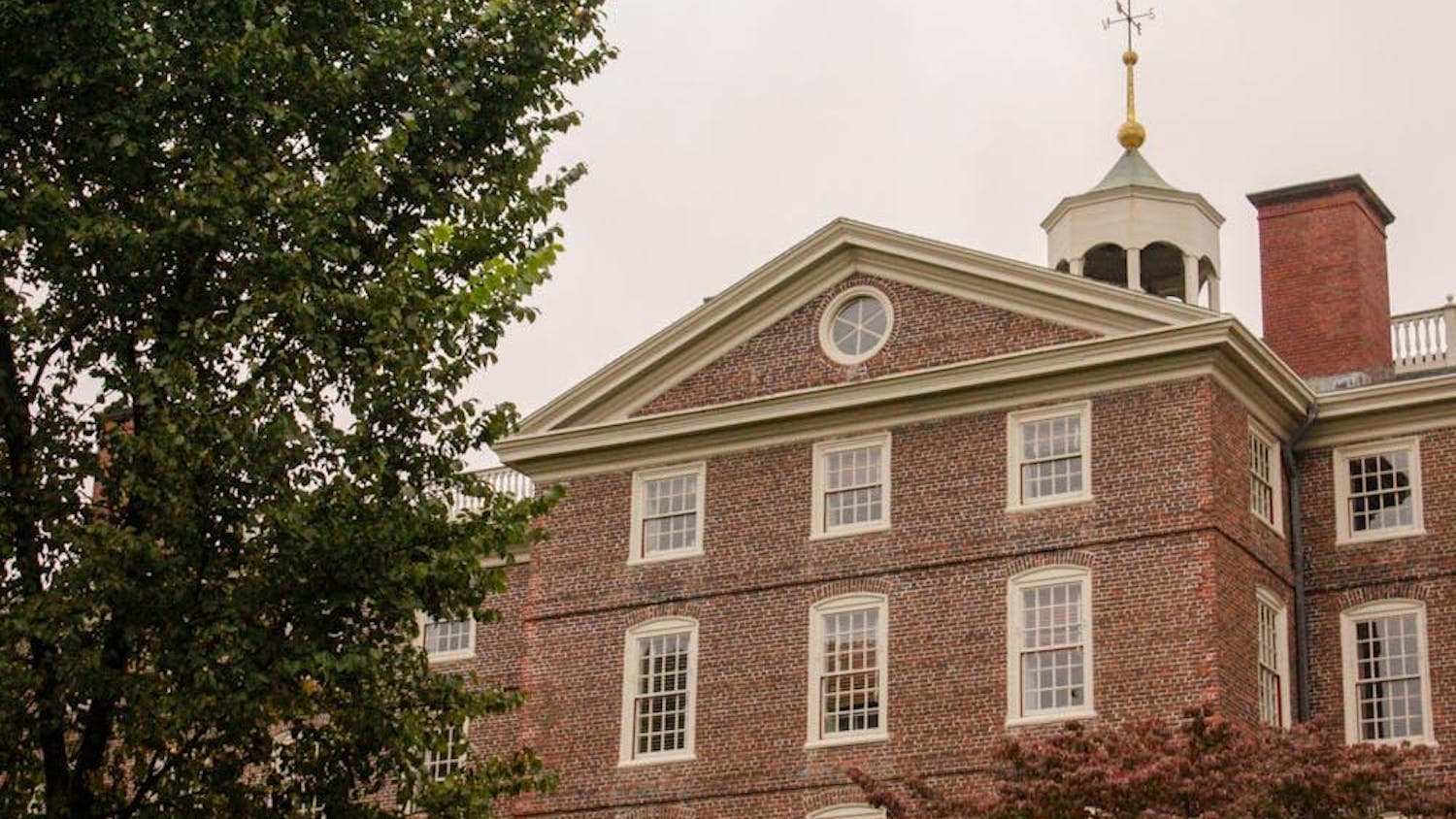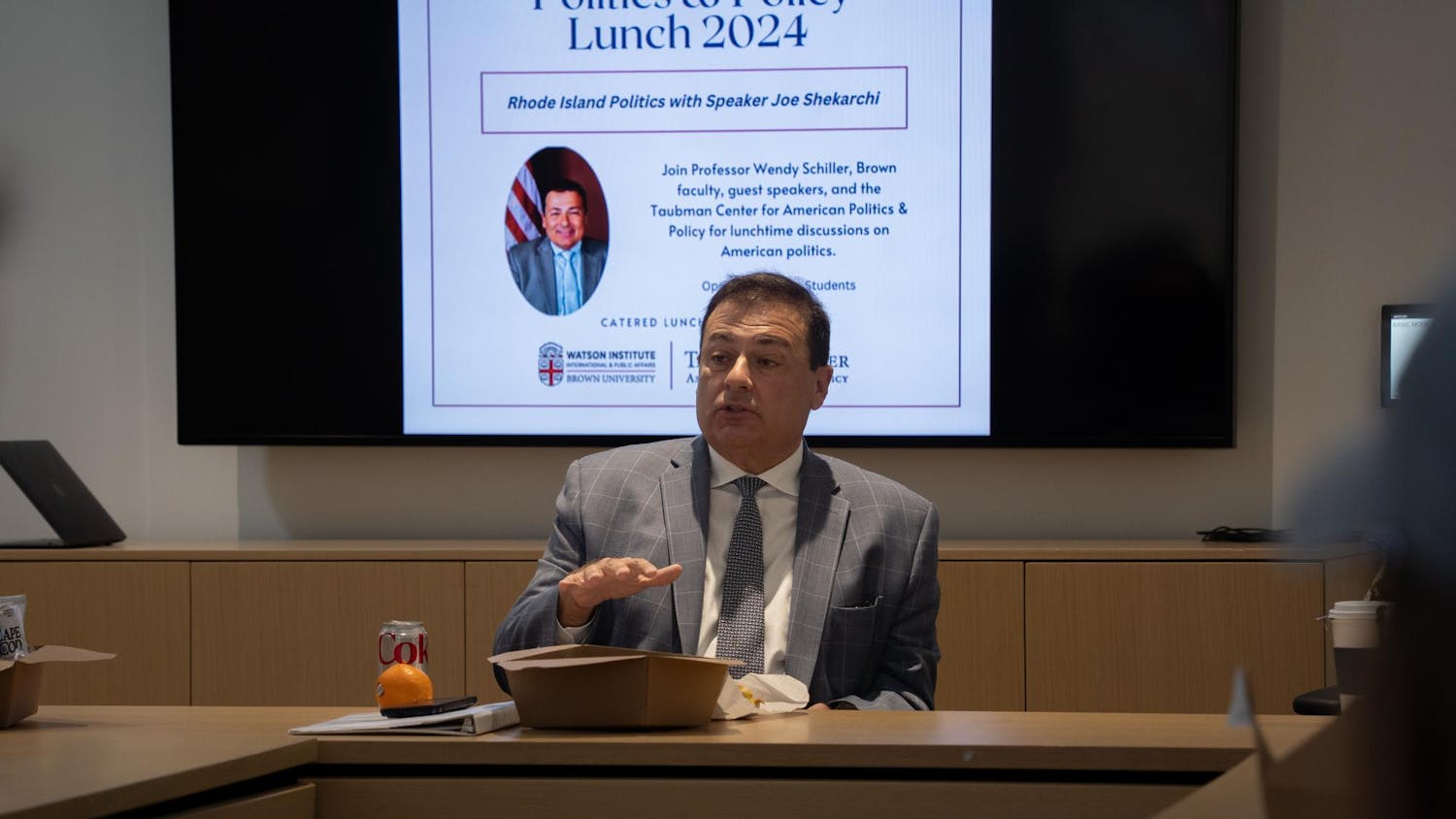Correction appended.
When students walked through Faunce Arch for the first time this semester, they noticed a remarkable transformation. In place of brick siding, glass doors marked the opening to the new Stephen Robert '62 Campus Center. Signs of construction dominated campus last year, the work going into the renovation project quite visible. But what about the less conspicuous addition — the name of the building? What, exactly, is in a name?
A drive for donations
"There are a lot of buildings we are willing to name if you are willing to give X," said Beppie Huidekoper, executive vice president for finance and administration. When people want a structure named after them or for their family, they can provide donations in exchange for naming rights.
Putting a family name on a building at Brown is a compelling reason to donate, Huidekoper said, but it is not the only reason. Others are focused on a mission to improve the University, and the name is merely a byproduct of this devotion.
But some donors have a vested interest in the outcome of a development, making a "project-driven" rather than recognition-driven donation, Huidekoper said. The Stephen Robert '62 Campus Center is such an example. The former chancellor's contribution was driven by the goal, rather than the naming, Huidekoper said, adding that "Stephen Robert really wanted to create a campus center." Because Robert had been an advocate and lead contributor to the center, the Corporation voted to establish it under his name.
In general, there are university guidelines for naming, and each individual naming must be approved by the Corporation, said Steven King '91, senior vice president for university advancement.
Currently, the Campaign for Academic Enrichment has many naming options in exchange for large donations. With a $10 to $35 million contribution, a donor can name a new building such as the Medical Education Building, according to the Campaign's website. For a lesser sum of only $3 million, an existing building such as the East Asian Studies building can be named.
"To name a building would be typically 50 percent of the cost of the renovation," King said. The money donated may be used to create an endowment or finish necessary restoration, he said.
The condition, stature of the building and the foot traffic in the area also factor into the price tag, Huidekoper said.
The donations may be specifically designated for naming rights, but there are also times when the Corporation may vote to direct funds to the process, King said. The newly named Ittleson Quadrangle went through the latter process. Though the Corporation originally called for a $5 million donation to name the future athletics quadrangle, the Ittleson Foundation gave $1.5 million for "green and sustainable initiatives campus-wide," according to the Corporation's May press release. Corporation trustee Anthony Ittleson's '68 P'89 P'90 has also given money in the past. The Corporation voted to use this money as a contribution to name the quadrangle.
"It is a nice space for someone who has done a lot for the University," King said. "Naming is just one way the University honors generous offers from donors."
Honorable mention
Honorific naming voted in by the Corporation can also lead to naming rights. J. Walter Wilson is an example of a building named for honorary reasons, Huidekoper said. The building was a laboratory at the time it was named after Professor of Biology J. Walter Wilson. Though Huidekoper said they could now rename it given its changed purpose, its original naming was in recognition of Wilson's service to the University.
Many building names actually reflect a combination of financial generosity and intangible service contributions to the community.
While Robert was the lead financial contributor to the campus center, his service to the Brown community was also considered in the naming of the campus center within Faunce.
"Brown is proud to honor the achievements and extraordinary leadership of Stephen Robert," President Ruth Simmons said in a release following a 2007 Corporation meeting. "It is especially fitting that the Center, which will be so central to our campus activities and students' experiences, will bear this chancellor's name."
This combination of large donations and a lifetime of service to Brown is also exemplified by Sidney Frank '42, King said. After Frank gave the largest single gift in Brown's history, Frank's name was formally applied to the life sciences building soon after his death in 2006. This naming was intended to recognize his contributions throughout life, Huidekoper said.
"His family was very happy," she added.
In recognition of donations over a lifetime, the Corporation may decide to honor a person by using his name even if they did not specifically seek naming rights, Huidekoper said.
And the reason donors contribute is also often tied to the recognition of the service Brown did for them, rather than pleasure derived from seeing their name on campus.
Frank, who attended Brown for only one year before leaving to take an assignment overseas with Pratt & Whiteney Motors war, explained his contributions as an acknowledgement of what Brown gave him. "I find I have a little money to spare, and with that, I'd like to thank Brown for all it did for me and gave to me," Frank said, according to a Corporation press release from 2003.
A previous version of this article stated that Sidney Frank '42 entered the war. Though he took a war-time assignment overseas with Pratt & Whitney Motors, he did not serve in the armed forces. Also, Anthony Ittleson's '68 P'89 P'90 name was misspelled. The Herald regrets the error.




